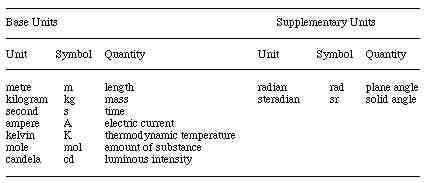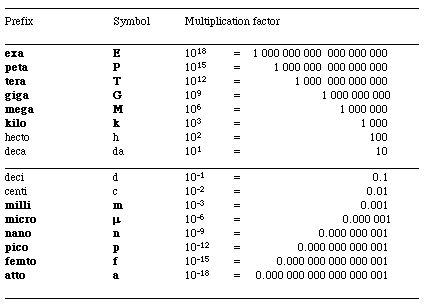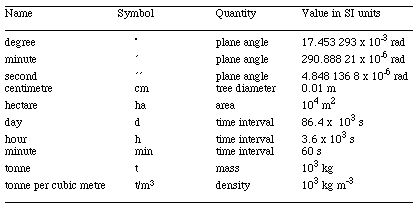Units of measurement, symbols, significant digits and rounding off
1.1 Units of measurement and symbols
1.2 Significant digits
1.3 Rounding off
1.4 Bias, accuracy and precision
Individual Trees and Logs
2.1 Bole characteristics
2.1.1 Diameter
2.1.2 Height
2.1.3 Bark thickness
2.1.4 Volume
2.1.5 Stem form and taper
2.2 Log characteristics
2.2.1 Diameter
2.2.2 Length
2.2.3 Volume
2.2.4 Weight
2.2.5 Allowance for defect
2.3 Crown characteristics
2.3.1 Width
2.3.2 Depth
2.3.3 Surface area
2.3.4 Volume
2.3.5 Biomass
2.4 Stem analysis
Groups of Trees (Stands)
3.1 Number of trees
3.2 Diameter
3.3 Basal area
3.3.1 Fixed-area plots
3.3.2 Angle count sampling
3.3.3 Advantages and disadvantages of angle count sampling
3.4 Height
3.4.1 Mean height
3.4.2 Predominant height, top height, dominant height
3.4.3 Stand height curve
3.5 Volume
3.6 Crown closure
3.7 Crown biomass
3.8 Growth and increment
References
Appendix 1: Checklist of equipment and materials
[RWG#2] [Copyright] [Title Page] [Next Page] [Last Page]
1.1 UNITS OF MEASUREMENT AND SYMBOLS
Australia is a signatory of the Metric Convention. Thus, when measuring forest trees and their components, and when reporting data, we are committed to use the International System of Units (SI for short). The SI system is progressively being adopted by 'metric' countries of long standing and it is the required system for almost all international journals. It has seven base units and two supplementary units (Table 1.1).
Table 1.1: SI Base Units and Supplementary Units

Using the units in Table 1.1 and the relationships between physical quantities, all other units which comprise the SI system can be derived. Other units can be obtained with the help of decimal prefixes (Table 1.2), e.g. mV (millivolt), but these are not part of the SI system per se. Departure from the SI system is tolerated where it has sound justification, e.g. where use of non-SI units is so entrenched internationally that it will continue indefinitely (Øgrim and Vaughan 1977). Some non-SI units allowed for general use which are used extensively in forest measurement are listed in Table 1.3.
Table 1.2: Decimal Prefixes Denoting Multiples and Sub-Multiples

Table 1.3: Some Non-SI Units Used in Forest Measurement

When using metric symbols, certain rules apply, namely:
(a) Capitals, Prefixes and Symbols
Do not use capitals for any SI units written out in full. Capitals are used for symbols only when the unit is derived from a proper name, e.g. newton N, hertz Hz. Capitals are not used for numerical prefixes or symbols other than the symbols T for tera (1012), G for giga (109) and M for mega (106), e.g. kilopascal kPa, megapascal MPa, milligram mg, megagram Mg. Incorrect use of capitals could be confusing if not disastrous, e.g. substituting Mg (megagram) for mg (milligram).
Rules governing the use of multiplying symbols and prefixes are:
- apply only one multiplying prefix at a time to a given unit, e.g. one-thousandth of a millimetre is referred to as 1 micrometre, not 1 milli millimetre.
- use no space or hyphen between the prefix and the name of the unit which it qualifies (e.g. millimetre, kilogram) and no space between the symbol for the prefix and the unit (e.g. mm, kg), i.e. the prefix is regarded as part of the unit symbol. Thus, mm2 means (mm)2, not m(m)2.
- use Roman type face for unit symbols (m, kg, s, N, etc.), prefixes (G, M, p, µ, etc.), numerals (5, 12, 457, etc.), and mathematical operators (dx, Δx, ∂x, etc.).
- use ordinary italic type face for quantities (m, v, Vm, ß, ∂, etc.) and bold italic type face for vector and matrix quantities (F, a, etc.). Standardised general symbols adopted by IUFRO in 1956 for reporting results in forest mensuration are listed in Table 1.4 (Van Soest et al. 1965).
Table 1.4: Standard Mensuration Symbols

The general symbols listed above can be expanded if necessary (e.g. using subscripts) for wider application (Table 1.5).
Table 1.5: Useful Expansions of the Standard Mensuration Symbols



Other mathematical and statistical symbols commonly used in forest literature are listed in Table 1.6.
(b) Plurals
Use the plural, where appropriate, when writing the name of an SI unit in full. Values of one and less are considered singular.
Always write symbols for units in the singular, e.g. 30 kilometres, but 30 km; 1.72 grams, but 1.72 g; 0.2 gram.
(c) Punctuation
Do not use periods after symbols except at the end of a sentence, e.g. "the table measured 1.2 m by 1.0 m."
Table 1.6: Mathematical and Statistical Symbols Used in Forest Literature



(d) Decimal Marker
Use a period (27.36) rather than a comma (27,36) as the decimal marker although use of a comma is common practice in many metric countries. Start all values less than one with a zero (0.2736).
(e) Thousand Marker
Use a space, never a comma, as a thousand marker, e.g. 4 632 137; 8 793.826 31. With four digit numbers, the space is optional, e.g. 1376 or 1 376. As stated above, the comma is used widely in many metric countries as a decimal marker. The comma was approved for use in Australia when the country adopted the metric system (see Øgrim and Vaughan 1977) but it found little support. By 1979, the decimal point was accepted as the standard decimal marker in Australia (ASA 1979). However, there is some justification for using the comma as a thousand marker in money transactions because a space provides an opportunity for fraudulent entry of an extra figure.
(f) Spacing
Leave a space between numbers and symbols, e.g. 17 kg not 17kg, and between the parts of symbols for compound names, e.g. kW h. However, leave no space between a numerical prefix and symbol , e.g. kg, mm, not k g, m m.
(g) Per
Use the inversion symbol or the solidus (/), not the letter "p", thus kg m-3 or kg/m3, not kgpm3.